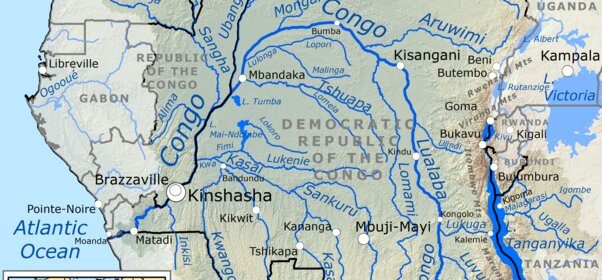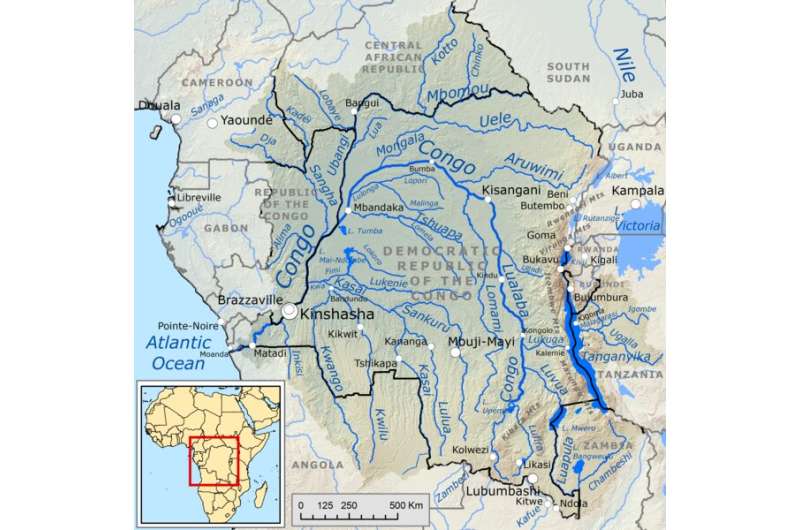Congo Basin’s vital clues to HIV’s behaviour: How we’re trying to crack its complex code

There have been tremendous gains towards reaching the United Nations 90-90-90 targets to end HIV as a public health threat. The aim was that, by 2020, 90% of people with HIV would know their status, 90% of those would be on treatment, and 90% would have suppressed viral loads.
But the epidemic is still far from over. One of the main reasons is the diversity that the HIV group M (HIV-1M) virus exhibits. This affects both vaccine and cure development.
Currently, there are four groups of HIV-1 (group M, N, O and P). Each originated from an independent transmission from a non-human primate to a human. HIV-1 group M (HIV-1M) is today responsible for the global AIDS pandemic. It can be divided into subtypes and numerous recombinant forms called clades or strains.
To design long term, globally relevant biological interventions, it is particularly important to fully understand the biological underpinnings of HIV-1M diversity: how it arose, spread and influenced the extents and duration of individual HIV-1 sub-epidemics.
I have spent years looking at the different steps that HIV-1M took when it first got into humans to become one of the major circulating viruses in the world. A lot of my work has focused on the Congo Basin. This is a region in the center of the continent that spans six countries and is made up predominantly of equatorial rain forests.
This is where HIV-1M is most diverse, even though HIV prevalence in the region is low. Infections have shown to include almost all the main described HIV-1M lineages, in addition to unusual and rare non-M group strains.
The region is also the site of the cross-species transmission of all the HIV-1 groups and was the launchpad of the global HIV epidemic around 1960.
We do not currently know why there are up to 10 times as many different strains of HIV-1M in the Congo Basin region than are found in any other part of the world. This is an important line of inquiry, and one that has pre-occupied me the most in my work.
The primary goal of my research has been to assess what makes one strain survive and spread and another not. Why have so many of the unusual strains found in the Congo Basin never left the region? Is it possible that the widespread strains that triggered HIV epidemics around the world simply infected a person who, after moving to another part of the world, happened to be an effective transmitter? These are very important questions that the field has struggled to address.
Today, it is possible to use the function of the different HIV-1M proteins to assess the biological differences between different lineages. What my colleagues and I have found so far indicates that there are specific biological differences between HIV-1M clades that may explain their uneven spread around the world.
This is important because a successful vaccine or cure strategy must deal with the issues of HIV emergence and anticipate the factors governing emergence. To be effective, vaccine formulas need to cover all emergent strains.
But there are still plenty of unknowns.
An ongoing search
In our ongoing study, we used the function of one of the HIV-1M proteins, the Nef protein, to understand the HIV epidemic in Cameroon.
This protein’s optimal activity is to favor the efficient replication of the virus and make it more transmissible. We used samples from two distinct cohorts: individuals living in remote villages, including around the presumed site of the cross-species transmission; and those residing in the cosmopolitan city of Yaoundé.
Our preliminary data indicated that up to 18 distinct HIV-1M clades were circulating in Cameroon.
Despite this broad diversity, one clade accounts for about 50% of all the circulating viruses in the two cohorts. In addition, the HIV-1M Nef of the different clades found in Cameroon displayed different functional activities. This suggests that these clades have different capacities of enhancing HIV-1 transmission.
Furthermore, the function of Nef to enhance transmission of HIV-1M was higher in the cosmopolitan city compared to the remote cohort. This tells us that HIV-1M might be more transmissible in the city compared to the remote areas.
These data add more explanations of why some HIV clades have caused global pandemics while others have not. For instance, these data suggest that specific biological properties of the ancestral HIV-1M clades may have influenced their epidemiology spread. And therefore these clades were genetically predisposed to successfully establish the HIV epidemic in Cameroon and perhaps in other parts of the world.
In addition, these data also suggest that HIV-1M viruses in the two cohorts follow different evolutionary trajectories, possibly driven by sexual partner networks. These networks are likely to be much broader in the cosmopolitan city of Yaoundé, where the epidemic is still expanding, compared to the remote villages. It is possible that viruses circulating within large urban Cameroonian populations may have been selected for increased transmissibility.
Going forward
Source: Read Full Article
